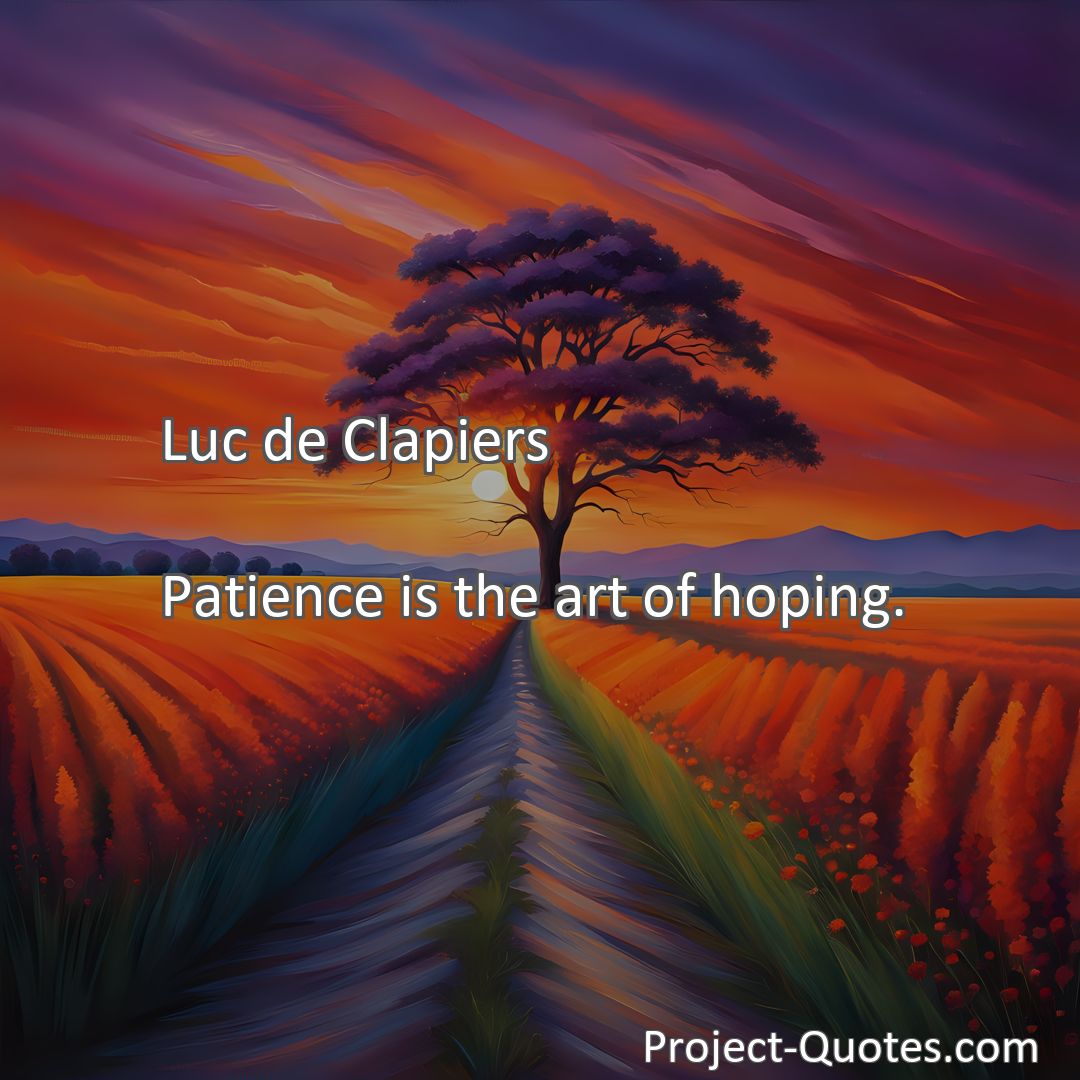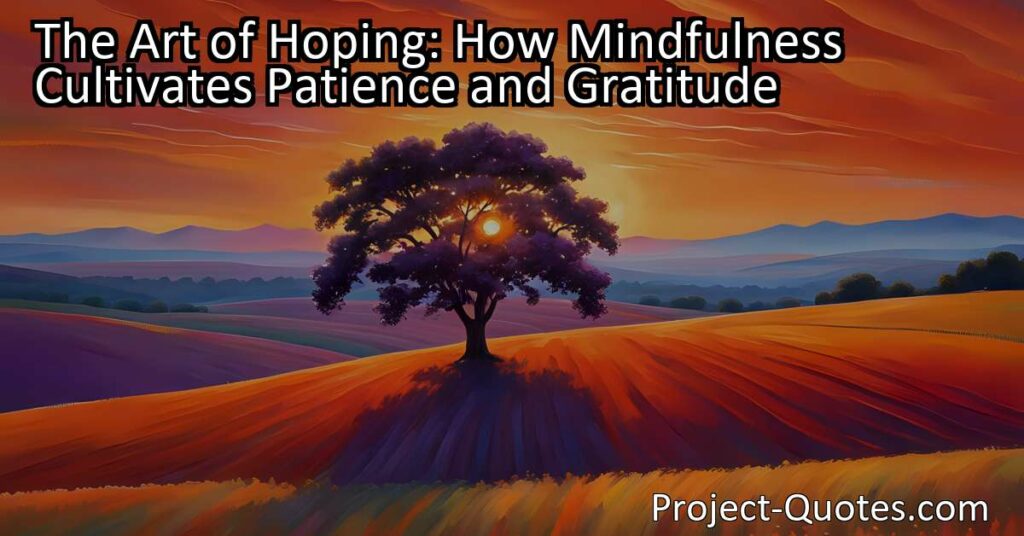Patience is the art of hoping.
Luc de Clapiers
“The Art of Hoping: How Mindfulness Cultivates Patience and Gratitude” delves into the concept of patience as an art form, emphasizing the key role it plays in nurturing hope. By practicing mindfulness, we can let go of expectations and appreciate the present moment, fostering gratitude along the way. Surrounding ourselves with a supportive community and practicing self-compassion are also important aspects of mastering the art of hoping.
Table of Contents
Meaning of Quote – Patience is the art of hoping.
Patience is often considered a virtue, but have you ever thought of it as an art? Luc de Clapiers, a French philosopher, once remarked that patience is truly the art of hoping. And indeed, when we take a closer look at the concept of patience, we discover that it involves much more than simply waiting for something to happen. It is a skill that requires practice and a positive mindset, as well as the ability to navigate through life’s ups and downs with grace and resilience.
To truly understand the art of hoping, we need to delve into the meaning of patience itself. Patience can be defined as the ability to remain calm and composed in the face of obstacles, delays, or frustrations. It is the willingness to endure hardships or difficult situations without becoming disheartened or giving up. In other words, patience is an essential quality that allows us to maintain a positive outlook even when circumstances may seem bleak.
When we think about hope, it is often associated with optimism and a belief in the possibility of a better future. Hope fuels our dreams and propels us forward, giving us the motivation to pursue our goals. It allows us to envision a better tomorrow and encourages us to take the necessary steps towards achieving it. Without hope, life can quickly become devoid of meaning and purpose.
So how does patience fit into the equation of hope? Well, consider this: hope without patience is like a candle burning out too quickly. It may start with a flicker of inspiration, but without the steady flame of patience, it can easily be extinguished. Patience, on the other hand, acts as a catalyst for hope, allowing it to flourish and grow even in the face of adversity. It provides the necessary endurance to persevere through difficult times, knowing that brighter days are on the horizon.
To cultivate patience is to cultivate the art of hoping. It requires a conscious effort to develop a mindset that embraces uncertainty and acknowledges that not everything will happen instantaneously. This mindset allows us to navigate through life’s challenges with grace and resilience, knowing that every setback is an opportunity for growth and that every delay is a chance to reassess our strategies.
In our fast-paced modern world, patience has become somewhat of a lost art. We have become accustomed to instant gratification and are easily frustrated when things don’t go as planned. We want quick results, immediate success, and instant solutions. However, life rarely unfolds in such a linear and predictable manner. It is filled with twists and turns, setbacks and detours. And it is through patience that we can find the strength to embrace the journey, rather than just focusing on the destination.
Patience is not an innate trait; rather, it is something that can be learned and honed over time. It requires practice and self-discipline. Just like an artist who meticulously crafts a masterpiece, we must invest time and effort into perfecting the art of hoping. This involves cultivating qualities such as resilience, perseverance, and emotional stability.
One way to develop patience is through mindfulness. By practicing mindfulness, we learn to be fully present in the moment, accepting things as they are without judgment or resistance. This allows us to let go of any expectations or attachments to specific outcomes, freeing us from the frustration that often accompanies impatience. Mindfulness also helps us cultivate gratitude for the present moment, appreciating the journey rather than solely focusing on the end result.
Another essential aspect of the art of hoping is self-compassion. Often, we can be most impatient with ourselves, expecting immediate perfection or berating ourselves for past mistakes. But true patience requires that we treat ourselves with kindness and understanding. We must acknowledge our own shortcomings and limitations, while also recognizing our ability to learn and grow. Self-compassion allows us to maintain hope even when we fall short of our own expectations.
Furthermore, surrounding ourselves with a supportive community can greatly contribute to our ability to practice patience. By engaging with others who share our goals and values, we can gain inspiration and encouragement. Sharing our struggles and successes with trusted friends or mentors can help us gain a fresh perspective and remind us that patience is a shared journey.
In conclusion, Luc de Clapiers’ quote, “Patience is the art of hoping,” reminds us that patience is not simply an act of waiting; rather, it is a skill that requires practice, perseverance, and an optimistic mindset. Patience allows us to nurture hope, to believe in the possibility of a better future even when faced with obstacles. It teaches us to embrace the journey, to be present in the moment, and to cultivate self-compassion. By mastering the art of hoping, we can live more fulfilling lives, with a steadfast belief in our dreams and the resilience to overcome any challenges that come our way.
I hope this quote inspired image brings you hope and peace. Share it with someone who needs it today!


